Recent datasets
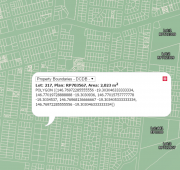
This polygon layer is a 'lite' version of the Digital Cadastral Database (DCDB) showing minimal attribute data about the property boundaries e.g.: base lot polygons, Lot and Plan attributes and an accuracy statement covering the whole of Queensland. See additional information also.
This data is updated nightly on the QSpatial portal, but only infrequently on the eAtlas. The versions setup on the eAtlas are retained for historic purposes.

Surveys to determine abundance patterns of jellyfishes across the continental shelf were undertaken over three summers starting in December 2007 along three cross shelf transects (Cooktown, Cairns and the Palm Island Group).
Sampling was done in three strata at inner, mid and outer-shelf reef or island sites and an inshore beam-trawl survey. Within each distance strata sampling was done at two sites separated by 0.7 to 3 km and at each site two replicate one hour samples were taken for abundance data.
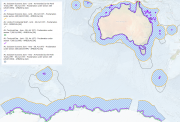
The dataset depicts the proclamations made under the Seas and Submerged Lands Act (SSLA) 1973. This includes the continental shelf, the Exclusive Economic Zone (EEZ), territorial sea and territorial sea baselines.

This dataset shows the effects of herbicides (detected in the Great Barrier Reef catchments) on the growth rates (from stem length and biomass) on the stonewort Ceratophyllum demersum during laboratory experiments conducted in 2019.

This dataset shows the effects of herbicides (detected in the Great Barrier Reef catchments) on the growth rates (from cell density data) and photosynthesis (effective quantum yield) on the microalgae Chlorella sp. during laboratory experiments conducted from 2017-2019.
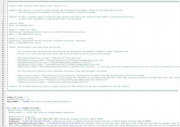
P2R.data.reader.v041220 with Header.R
This is a block of R code written for NESP Tropical Water Quality Hub Project 3.1.6
The software uses data supplied from the Queensland Government’s Paddock to Reef (P2R) modelling system, and other publicly available data, to generate plots of supply curves for water quality credits in dissolved inorganic nitrogen (DIN) for the main catchments in the Wet Tropics.

This dataset consists of monitoring data from macroalgae removal and larval seeding experiments in Florence and Arthur Bay at Magnetic Island, Queensland, Australia, collected between 2018-2020. There were twelve 5x5m permanent plots in each bay; three with macroalgae removal only, three with larval seeding only, three with macroalgae removal and larval seeding and three control plots. These data include:
- Stationary point count fish survey data
- Photo quadrats
- Coral recruitment to settlement tiles
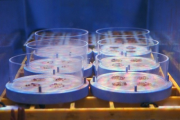
This dataset consists of one spreadsheet, which shows the survival, number of polyps and ability to remove sediment of up to fourteen weeks old Acropora millepora coral recruits while being exposed to three different climate scenarios resembling current climate conditions and conditions expected by mid and end of the century. Coral recruit resilience towards sedimentation was tested by exposing the recruits either five- and ten-weeks following settlement (experiment 1) or only ten-weeks following settlement (experiment 2).
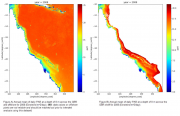
This dataset contains estimated daily integrated photosynthetically active radiation (PAR) at 8 m depth in the Great Barrier Reef Marine Park and Coral Sea for each day from April 2002 through to December 2019. Data are provided on a 1km grid.

This dataset shows larval connectivities between reefs that exceeded, and did not exceed, thermal thresholds for damage during the 2016/2017 Great Barrier Reef bleaching events. The loss of reproductive adult colonies during bleaching events has the implication that coral cover recovery will require the supply of coral larvae from external sources (other reefs).
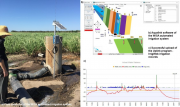
This dataset presents the programs for enabling communication between the WiSA automated irrigation system and the decision support tool – IrrigWeb for NESP TWQ Project 3.1.2. The WiSA automated irrigation system is a commercialised platform that is used to turn on/off pumps and valves remotely. Aqualink is a software in the WiSA system that used to manage the communication between users and the WiSA hardware. Users can also use this software to manage irrigation schedules and generate irrigation reports.
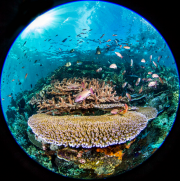
The majority of data integrated in NESP 4.6 was based on either a) expert elicitation and surveys, or b) literature reviews. Two case studies used data from additional sources:
Case study 2: carbonate budget data was calculated for the GBR from AIMS LTMP data between 2014-2018.
Case study 5: included experiments of CoTS juvenile feeding preferences between three algal types (biofilm, CCA and Ampiroa), and so data in this spreadsheet is unique.
Methods:
Elicitation scores and ranks: Main modes expert elicitation and literature review
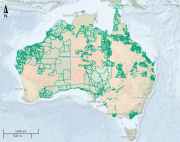
RNTBCs (Registered Native Title Bodies Corporate) are corporations which have prescribed functions under the Native Title Act 1993 (NTA) to hold, protect and manage determined native title and ensure certainty for governments and other parties interested in accessing or regulating native title land and waters by providing a legal entity to manage and conduct the affairs of the native title holders. PBCs (Prescribed Bodies Corporate) are established as an interim measure to represent native title owners and their interests until an RNTBC is formally registered.
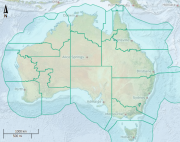
A representative Aboriginal, Torres Strait Islander body (RATSIB) is a body recognised by the Commonwealth under s 203AD of the NTA to represent native title holders and persons who may hold native title and to consult with Aboriginal and Torres Strait Islander persons within a specified area.

The National Native Title Register is kept by the Native Title Registrar pursuant to s 192 of the NTA to hold information about approved determinations of native title. A "determination of native title" is a decision on whether native title exists in relation to a particular area of land or waters (s 225 of the NTA). Determinations of native title can be made by agreement (consent determination), without opposition (unopposed determination) or following a trial (litigated determination).
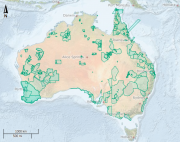
The Schedule of Native Title Determination Applications is kept by the Native Title Registrar pursuant to s 98A(1) of the NTA and contains information on all applications made under s 61 of the NTA, including claimant, non-claimant, compensation applications and applications for a revised determination of native title.
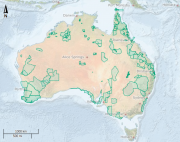
The Register of Native Title Claims is kept by the Native Title Registrar pursuant to s 185 of the NTA to hold information on claimant applications that have satisfied the registration requirements set out in ss 190B and 190C of the NTA. Native title claimants whose applications have been accepted for registration are afforded a number of procedural rights in relation to future acts that affect native title including the right to negotiate, the right to be notified, the right to comment, the right to request consultation, or the right to object as prescribed under the NTA.

This dataset reflects the external boundaries of native title applications which have been combined, discontinued, dismissed, struck out or withdrawn. These include claimant, non-claimant and compensation applications. The dataset depicts the geospatial boundaries of applications as at the time the application became inactive.
The NTDA Historical dataset provides a spatial representation of application areas as they appeared at the time that the application was ended. Note that in some cases this may be different from the area at the time the application was lodged.
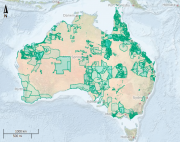
An indigenous land use agreement (ILUA) is a voluntary, legally binding agreement about the use and management of land or waters, made between one or more native title groups and non-native title interest holders in the ILUA area (such as grantee parties, pastoralists or governments). The Register of Indigenous Land Use Agreements is kept by the Native Title Registrar in accordance with s 199A of the NTA and includes a description of the ILUA area, the parties' names, the term of the ILUA and other information as the Registrar considers is appropriate (s 199B of the NTA).
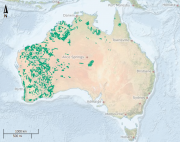
A future act objection is where a native title party objects to the inclusion of a statement that the act attracts the expedited procedure (s 32 of the NTA). A future act is considered to attract the expedited procedure if the act: it is unlikely to interfere with the native title holders' community or social activities; areas or sites of particular significance; or cause major disturbance to any land or waters concerned (s 237 of the NTA).



